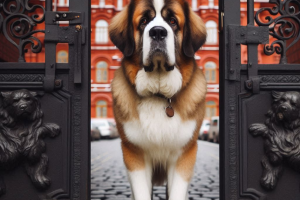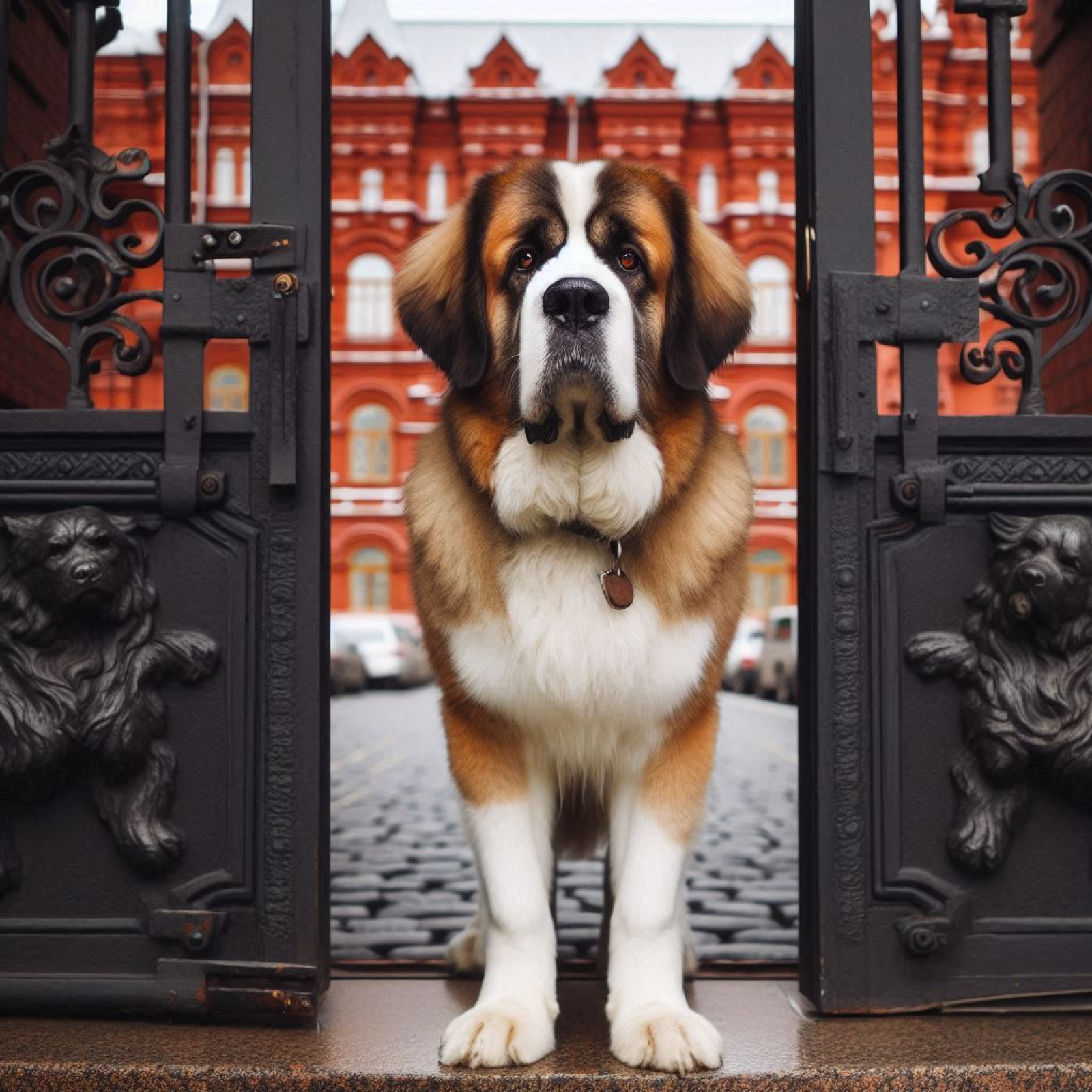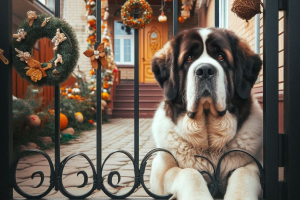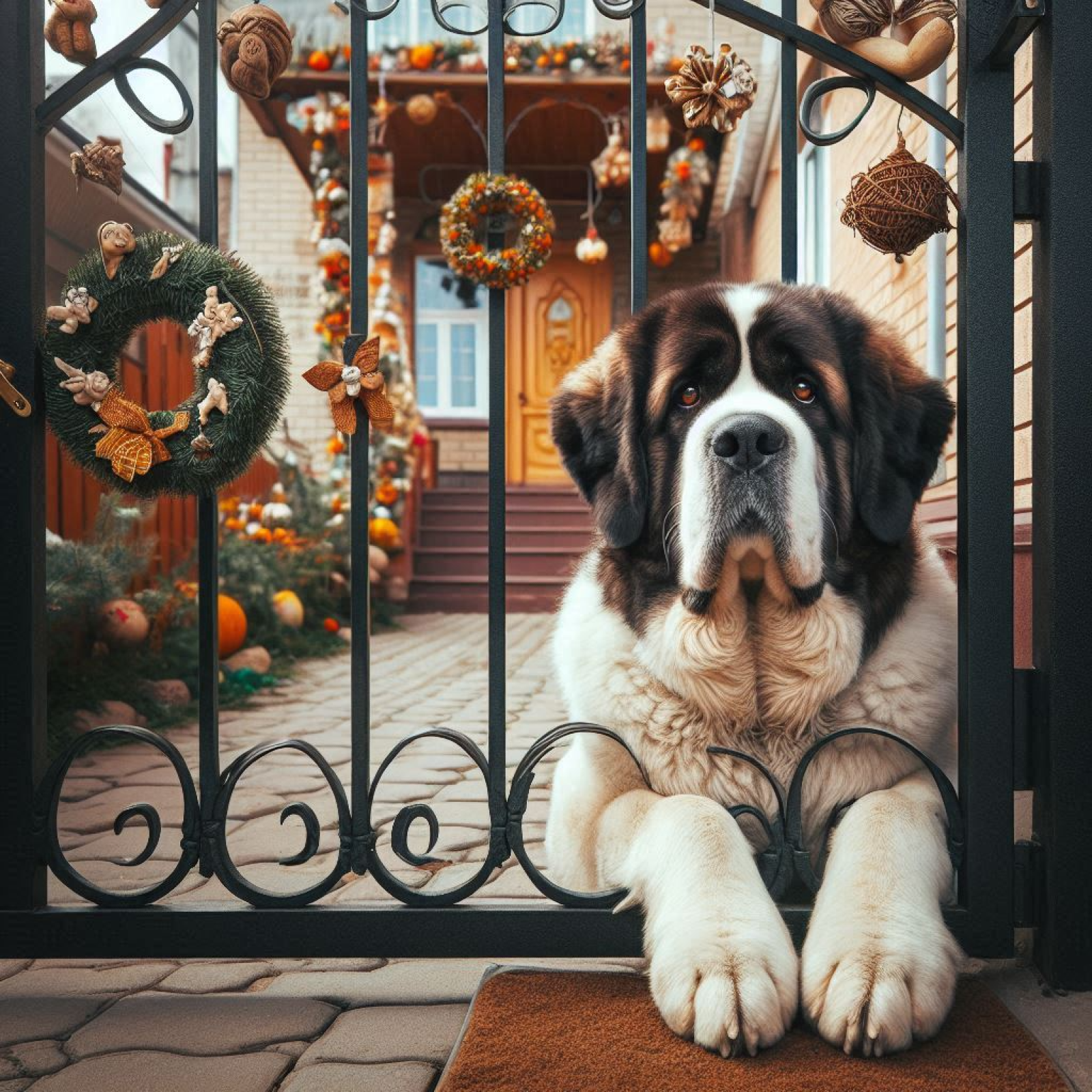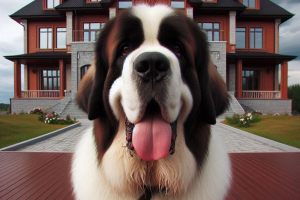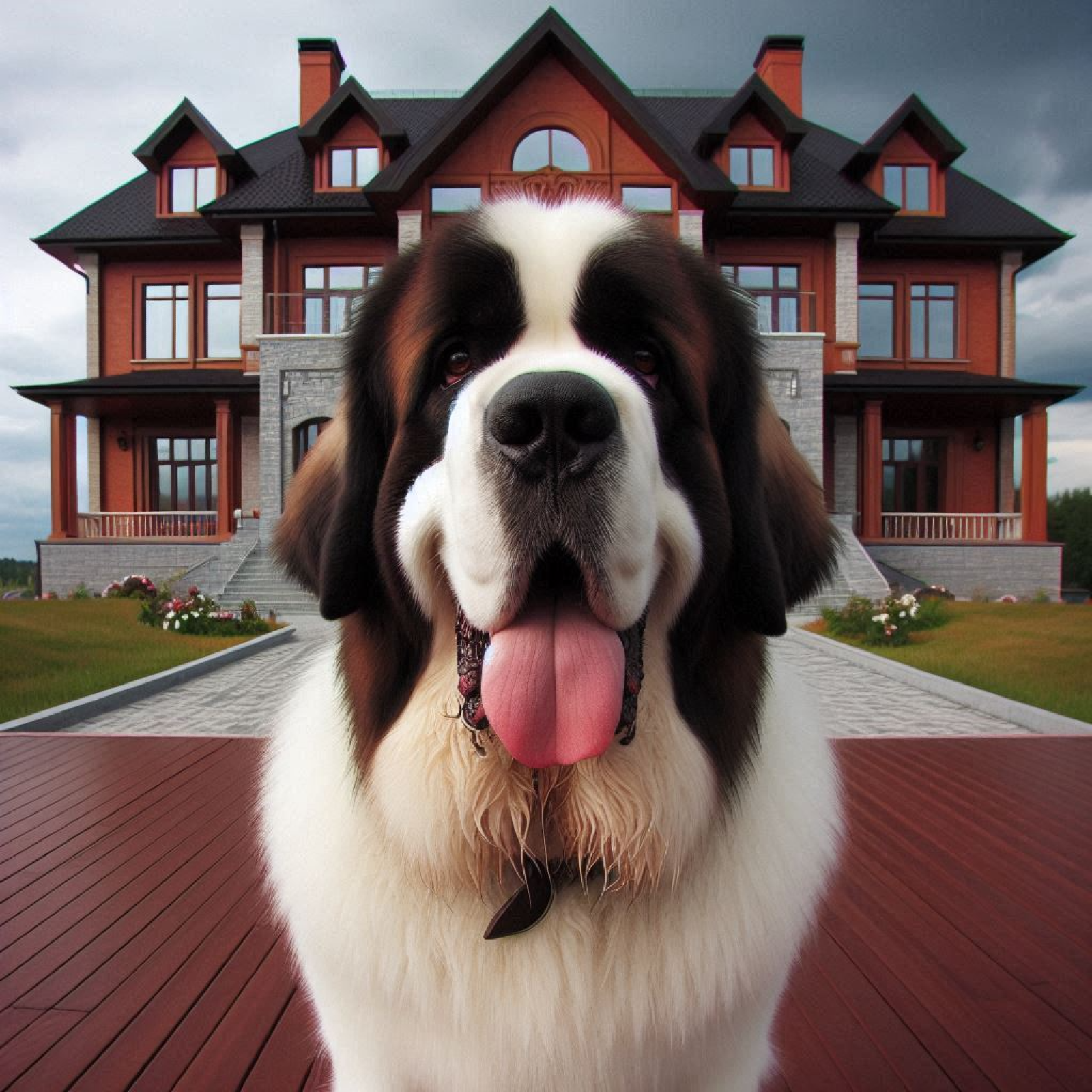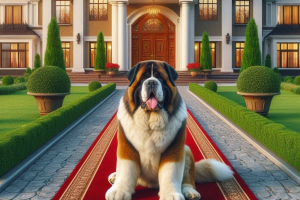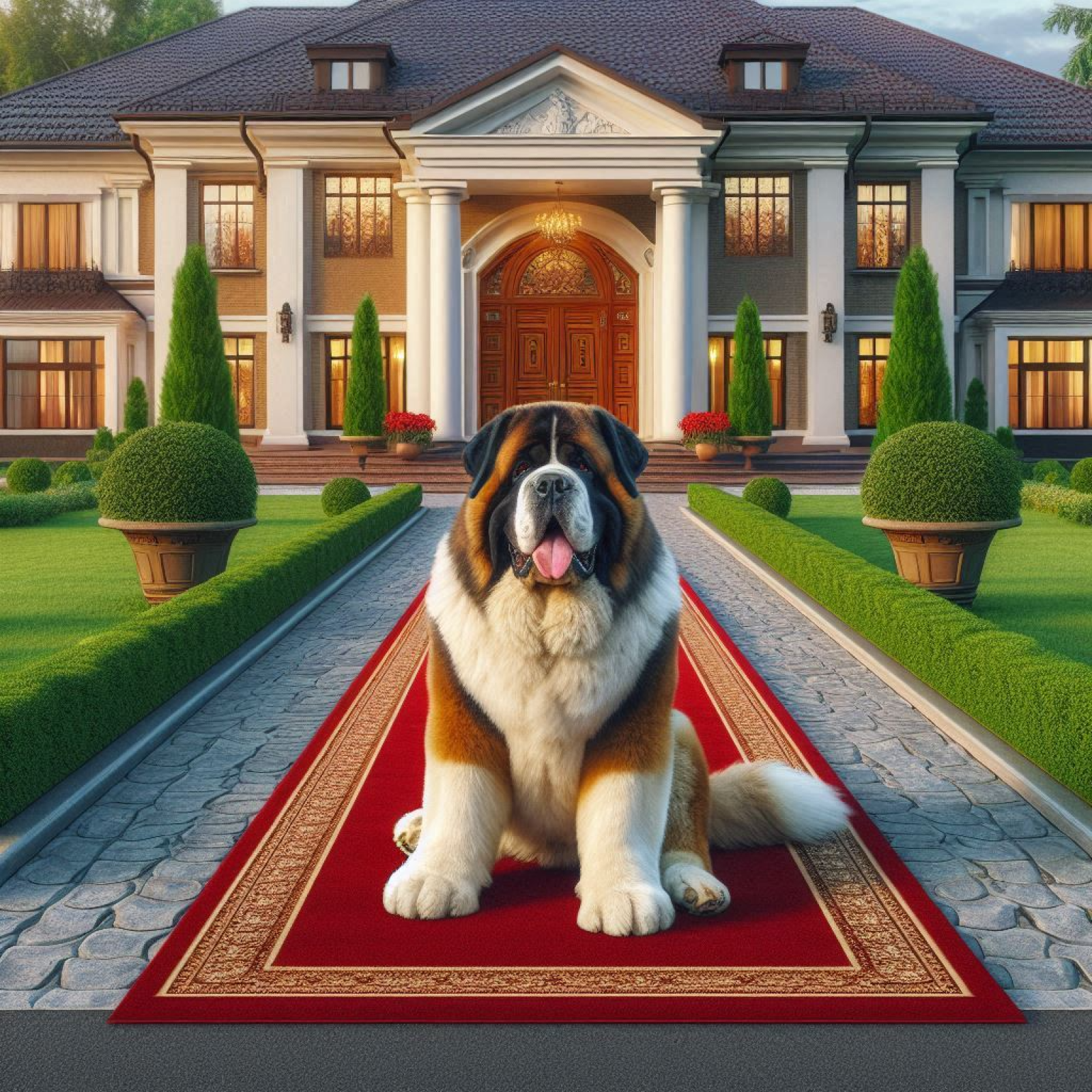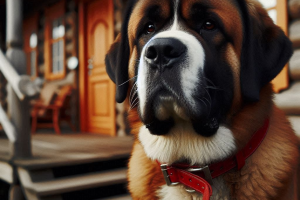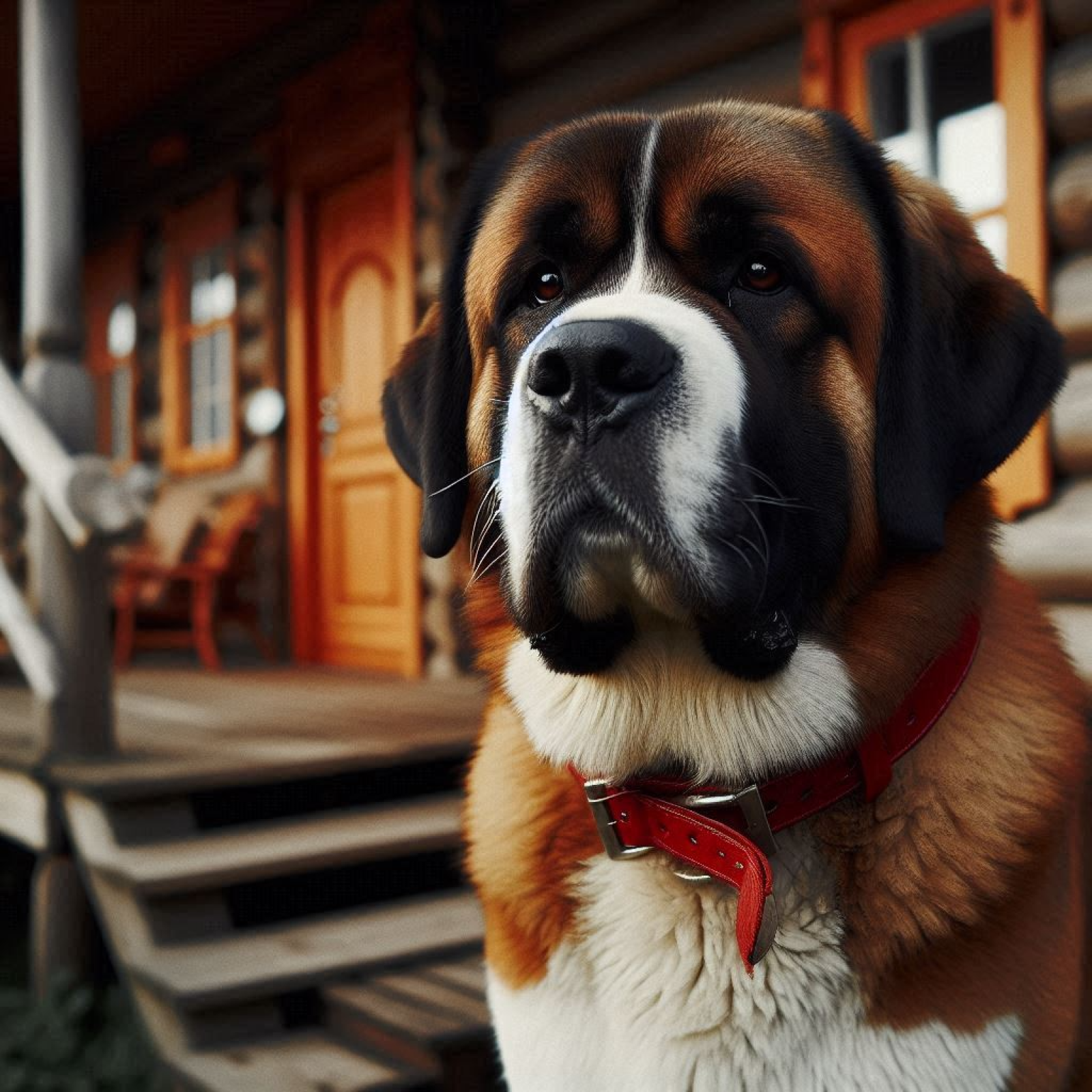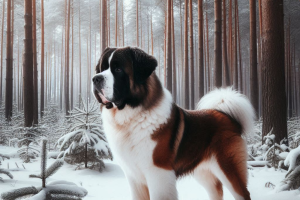Moscow Watchdog History
MOSCOW WATCHDOG AKA MOSCOWSKAYA STOROZEVAYA, MOSCOW CENTRY DOG, MOSCOW GUARDIAN DOG
While the MWD is looking much like the St Bernard, in reality this Russian Native Breed combines the St Bernard's beauty and intelligence and Caucasian Ovtcharka's versatility and drive. Adaptability of this breed exceeds both, CO and St Bernard. Regardless of the conditions, the MWD perfectly fits into any environment. In post-Soviet countries, MWD is highly praised as a universal dog, being a perfect family pet, while it's instincts makes it highly trainable working and personal protection dog. This is how MWD temperament is described in Russia : "Family members do not believe, that it the toughest dog in protection training, while the trainer does not believe that this beast is the sweetest family pet".
HOW THE BREED WAS BORN
MWD is one of the few breeds, which were created in former USSR for performing specific tasks of guarding, patrolling and convoying, and the only one, where the creators reached their goal.
This process gives us good illustration of what can be get from mastiffs gene pools by distinguished professionals with clear vision of the desirable result, good breeding material and some luck. Like in the "natural" breeding techniques, used for thousands of years, results were achieved almost intuitively, based mainly on experience and creative vision of the breed.
Russian kynologists in 40's already had some experience in research and alteration of various dog breeds, including negative (one may recall prewar experiments of crossing German Shepherds and Siberian Huskies, which did not give any good results even in first generations). This experience was very much different from that in Western countries and in USA. In former Eastern Block each and every new idea, even in dog breeding and training (especially in working dogs, which were like a kind of military equipment), had to be checked and approved by ideology. And it happened so, that main methods of modern dog breeding and training were put out of law in Soviet Empire (which includes at that time all Eastern Europe). Genetic researches where banned, the same as behaviorist ideas, until 60's. Amazingly, it did not have much effect on the quality of working dogs, and even now, a decade after the fall of Communist Empire, former Eastern Block, including it's Soviet part, still have the highest quality working dogs. The reason for it is decades of enforced implementing of severe breeding, raising and training rules for all working breeds.
According to Russian Academician M.Ivanov, the following criteria had to be met while breeding: a) building a strong background by establishing of the comprehensive Breed Standard, based on clear vision of the perfect breed specimen for proper selection of the foundation stock; it must give the possibility of determination of the inbreed types and detailed description of the individual animals; b) evaluation of every breeding prospect in accordance with the standard in confirmation, temperament and training abilities; c) evaluation of every litter, and rating the parents accordingly; the parents origin and the pedigrees must be carefully analyzed based on statistics ; d) noncompromised disqualification, selection for further breeding only the specimen carrying the most desirable traits in both conformation, temperament and trainability, in order to establish uniform population.
This ideas were not just declaration - they were used by millions of dog owners all over the former USSR. The whole system was based on the thousands of DOSAAF clubs (DOSAAF was government ruled paramilitary organization for "helping Army, Aviation and Fleet", responsible for keeping society and citizens to be a part of military machine). Most of those DOSAAF clubs had special dog sections which were capable of providing testing, training, litter evaluation, selection of best foundation animals, etc. DOSAAF was strictly supervising selection for working qualities. For decades dog professionals with adequate schooling and training were to decide whether or not certain pair of dogs, (usually owned by private citizens), should be bred, and it was practically impossible to get registration papers and pedigrees for unplanned litters. Even now, after fall of the Soviet system and DOSAAF, there are dozens of clubs and kennels all over the former USSR, which are continuing this practices and maintaining old DOSAAF stud books.
Information above may seem unrelated to breed description, but we must realize, that Moscow Watchdog is the only known experiment of using this severe rules in breeding and raising Molosses. (The other two Molosses from the territory of the former Soviet Union, Caucasian and Central-Asian Ovtcharkas, entered the period of cultural "kennel breeding" in the middle 80's, at the decline of DOSAAF, and were not subject to this severe breeding requirements).
At the end of 40's, after WW2, Russian military kynologists faced a task to restore the canine population of Soviet States, seriously outnumbered by war. The most used military breed, German Shepherds (which after the war turned into "East European Shepherds" - the reason was obvious, "German" was synonym to "enemy"), highly trainable and intelligent, are designed to obey commands; decades of specialized training changed the breed ability for independent decisions and actions, what limited their use as guardian dogs. And post-war Russia, half-ruined, poor, with hundreds of thousands of soldiers returning home from Europe and raising crime wave, needed thousands of Guard Dogs. Those dogs had to be able in any conditions, including 6 to 8 months snowy winters with temperatures as low as -30-40 C, 24X7 guard and protect gigantic plants, warehouses, railroads, labor camps - all infrastructure of Soviet Empire, every piece of government property in the country, where practically everything was owned by government. The task was tremendous, and in 1946-47 Military kynologists begin their work. Project was headed by Gen. Medvedev. The Central School Of Military Kynology, a department of USSR Ministry of Defense, was chosen as the base for this research. In the beginning the main part of foundation stock consisted of trophy dogs from different countries (later many outstanding dogs were purchased from the countries of origin).
Gen. Medvedev's idea was massive cross-breeding purebred dogs in different combinations and selecting offsprings with desirable qualities - big, aggressive, weather-resistant and easy-to-use. The whole train of dogs from European kennels arrived by railroad in the Veshniaki village near Moscow, to the kennels of Central School Of Military Kynology. Many breeds were presented by only two-three dogs. Massive metisation began, and in four-five generations, near decade, new breed prospects were presented to the "Party and Government", as it was used to say in former USSR. The most known among them were: "Moscow Dog" ("Dog" serves in Russian for " Great Dane"), cross of predominantly Eastern-European Shepherd and Great Dane; "Moscow Wodolas (Diver)" - cross of Newfoundland, Caucasian Ovtcharka and German Shepherd; "Black Russian Terrier" - incredible mixture of dozen absolutely different breeds, from Giant Schnauzer to South-Russian Ovtcharka and Standard Poodle; and "Moscow Watchdog", made mainly of CO and Saint Bernard, plus couple of hounds, GSD, and God knows what more. Some of them were met by enthusiastic lovers and begin new life out of military program, as it happened to BRT, some were not understood by public and disappeared.
In 70's I owned one of this experimental dogs, "Moscow Dog" (Great Danes + Eastern-European Shepherds). Rona, black bitch with white chest and paws, with high cropped ears, head at the type of Great Dane, with less heavy muzzle, short hair with undercoat, 76cm in withers, 70kg weight, had ideal temperament and trainability. Very athletic (she easily jumped in the truck with a board more than 220cm high, runs across the river on the gas tube 60cm in diameter and 50m long, etc.), sleeping in snow when camping, spending days outdoors in the temperatures below -10C. Great dog, the companion to all our young adventures. I would say, it was a version of Great Dane, more compact, more usable in Russian climate, without any health problems, and with much more working drive.
Anyhow, the Army was not interested in further experiments, and public was not impressed by this "strange-looking Great Danes". I never found a matching stud to breed Rona, and even club did not help. I think, she was among the last ones in this breed group. The same fate met "Moscow Wodolaz". "Black Russian Terrier" - BRT- was rejected by military for another reason. It needs a lot of care for his long hair, trimming, brushing, etc. This beautiful black fur, so attractive to the public, becomes a problem in a field use. It was excluded from the program, from military kennels this breed was given for further development in DOSAAF clubs, and soon it found thousands of lovers in Russia and abroad.
Now, 50 years later, we can say, that all this experiments had only one successful result - if success means matching the given goal. It was creation of Moscow Watchdog: healthy, easy-to-use, easy-to-handle, intelligent, trainable, robust, with stable temperament, ideal All-Purpose Guardian Dog. But, as it sometimes happens to great projects, at the time of success there was already no need for it. Times changed: Stalinist regime, military rules, gigantic labor camps were already history. In the 70's, after almost three decades of training, selecting, breeding and evaluating, the leading military Kennel "Red Star" presented on the VDNH - kind of an official government show - more than fifty of it's best MWDs, of uniform conformation, fully trained, ready to any kind of work - excellent breeding stock. The task was fulfilled, professionals and public were impressed? but there was nobody out there to claim the newborn breed.
When in 70's great part of MWD's and their breeding program went to DOSAAF clubs, it found hundreds of lovers, amazed by MWDs intelligence and working abilities. Until 1985 they were working on breed development, and all severe rules of training and evaluating dogs and their offsprings were strictly preserved. In 1985 the MWD was officially recognized in Russia as a breed, and the experiments with adding new bloods were finished. The breed was established, it was different from parent ones, and it's wide use in different areas of guardian work - from plants and estates to personal protection - was the proof, that it was given the right name.
What in the breed?
Let us take a closer look on the formation of the MWD. Several breeds participated in the process: Caucasian Ovtcharka, Russian Hound, St-Bernard, German Shepherd, occasionally even Russian Borzoi. Among the whole bunch of crossbreeds, made at the beginning of the experiments, two were chosen - Russian Hound X GSD and CO X StB. This dogs were crossbred again and again, and from each litter the animals with the most robust built, with the best working abilities were selected. While working abilities of the resulting crossbreeds were increasing with each generation, the breeders were long indecisive as to general appearance of the dogs. There were MWDs with ears cropped, like COs, then there were MWDs with tails docked - until in 50's they begin looking generally like St Bernard. But the resulting breed was much more active and aggressive than StB, and much more controllable than CO (in 50's-60's CO's were not what we see in 00's, they were very different in size, conformation, temperament, and mostly untrainable). from the very beginning of the experiments, CoxStB crosses were used more often, in proportion 3:1 to others, and very soon Hounds x GSD crosses were excluded from the program. Creators returned to pure Molossians - CO and StB -, and now no one can find signs of Hound or GSD in the MWD appearance. But supposedly this initial bloods had some influence on what trainers call "working drive", something rather unusual to Molossians, but very natural to MWDs.
From the first generations of big, strong dogs with thick coat and undercoat, aggressive and active, well trained, were selected the dogs for further breeding. In the middle of 50's dozens of litters were regularly sent to Army for practical evaluation of their working abilities. The main criteria was, to make the new dogs free from undesirable features of parent breeds. It meant, that dogs of StB type, with unacceptable for MWD loose eyelids, lips, weak ligaments, phlegmatic, were bred to the dogs of more robust constitution and active temperament. And vice versa, dogs in CO type, with excessive aggression, unstable nervous system, with CO coloration, were bred to the dogs with more StB blood.
Here are some names of the famous ancestors of modern MWDs. From breeding CO Wephia to StB Tutti was born first breed Champion - ORSLAN. Later from StB Bibo and CO Raketa was born famous SHERKHAN. from StB Allah was born Ch Mars, multiple show winners Baron and Frank. Further development of the breed was based on the lines of 1. Ch ORSLAN: he was founder of the kennel lines of Ch Murat, Ch Dik, Ikar, Malysh, Jack-Janal 2. SHERKHAN: founder of the lines of Joy, Chebdar, Brut, Kashtan, Zhdan. 3. from new generations one of the most known is the line of VDNH winner ZURBAGAN and his son, Ch of Moscow Shows and VDNH Kardan.
According to the opinion of breed experts, until now most of outstanding bitches are from Sherhan lines, and the best litters they produced when bred to dogs from Orslan lines. This two general lines give the best representatives of two modern types of MWD. Orslan lines: high, heavy-boned, with heavy heads, very stable temperament, usually bright red, very trainable. Sometimes with narrow chest, problems with teeth, digestion, sometimes too heavy built and looking like StB. Sherhan lines: wide chest, strong teeth, strong joints in rear hindquarters, strong and robust constitution.
Sometimes of medium height, unstable, with non-desirable dark coloration , looking like CO. In MWDs today we can see influence of both of this lines.
Attachments
Share

